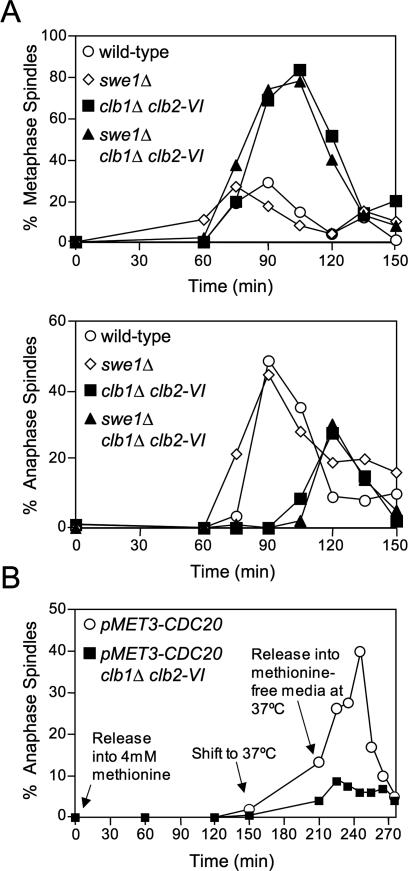Figure 2.
Clb1/2–CDK activity is required at the metaphase–anaphase transition to bring about anaphase entry. (A) Wild-type (A1411), swe1Δ (A7507), clb1Δ clb2-VI (A3000), and swe1Δ clb1Δ clb2-VI (A15936) cells, each carrying Cdc14-3HA, were grown and analyzed as described in Figure 1B. (Top panel) Percentage of cells with metaphase spindles. (Bottom panel) Percentage of cells with anaphase spindles. (B) pMET3-CDC20 (A7334) and pMET3-CDC20 clb1Δ clb2-VI Pds1-13Myc (A15112) cells were grown in methionine-free complete synthetic media (CSM) and arrested in G1 with α-factor (5 μg/mL) for 2.5 h at room temperature. The cells were washed with 10 vol CSM and released at room temperature into α-factor-free CSM containing 4 mM methionine to arrest cells in metaphase. After 2.5 h in methionine, cells were shifted to 37°C for 1 h to inactivate Clb2-VI–CDK activity in metaphase. Cells were then released into methionine-free CSM at 37°C to restore CDC20 expression while maintaining the inactivation of Clb2-VI–CDK. Fifteen percent of cells enter anaphase in the presence of methionine upon temperature shift to 37°C. We believe this is due to a temperature-induced transient derepression of the MET3 promoter.

